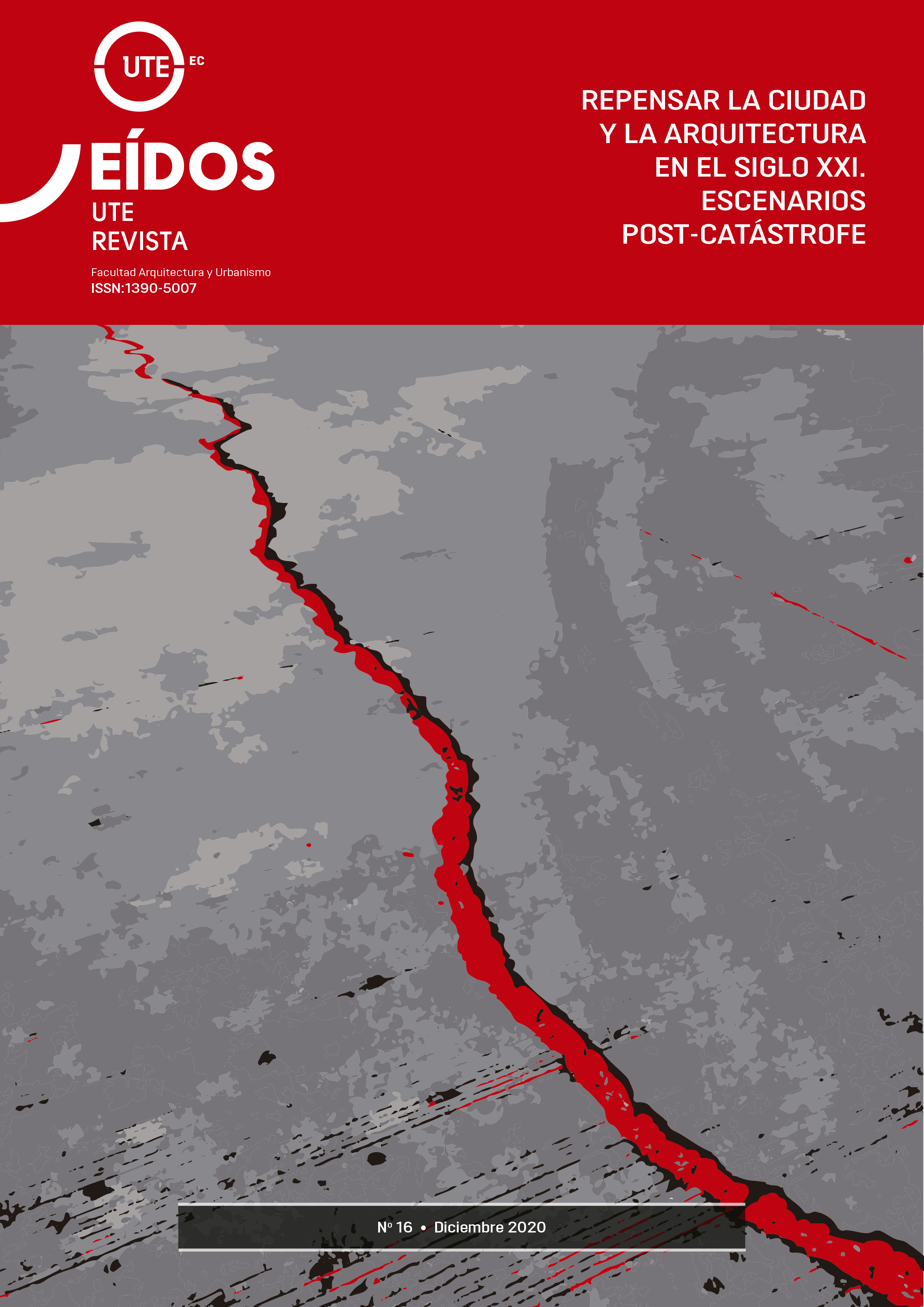Space and graphic representation experience as tools for the architecture learning process
Keywords:
Academic experience, architectural drawing, architectural routes, graphic representation, site visits on architecture, spatial experienceAbstract
This article reflects on the relationship between an architectural space and who experiences it and the interpretation of this space, explained from an academic experience. What do the drawings of an architectural journey like the one Le Corbusier did to the East, the book “Invisible cities” of Italo Calvino relates and the sketches made by a student during an architectural visit? The answer is that all of them are architectural interpretations through graphic or narrated images, and they result from a journey through, whether physical or imagined, spaces. Based on these premises, the elective subject Cuenca 4D was planned at the School of Architecture, Faculty of Design, Art and Architecture of the University of Azuay. As part of the course, site visits to projects designed by renowned local architects are organized. The visits give special importance to the student’s individual spatial perception, and how can it be represented in drawings. The objective is to demonstrate that the same object and space can be understood and interpreted from different points of view. This article synthesizes the history of this initiative, exposes the way in which the program is run, as well as it highlights the results obtained to date.
Downloads
References
Albertí, M. (2009). En las ciudades invisibles X. Suma, 61: 71-79. Disponible en https://bit.ly/2Hx7hHm
Albertí, M. (2008). En las ciudades invisibles VIII. Suma, 59: 73-80. Disponible en https://bit.ly/33eEOOe
Albertí, M. (2007). En las ciudades invisibles XIII Suma, 56: 97-104. Disponible en https://bit.ly/2HyvVrf
Albertí, M. (2006). En las ciudades invisibles Ia. Suma, 53, 83-91. Disponible en https://bit.ly/2UY5vlL
Aroztegui, C., Alvarado, R. G. y Sandoval, P. (2010). La representación cinematográfica como expresión subjetiva del espacio en la enseñanza de arquitectura. Argos, 27(52): 14-32. Disponible en https://bit.ly/2V2p8ZK .
Braghini, A. (2020). El concepto de espacio en la Escuela de Arquitectura de la Universidad Católica de Valparaíso (1952-1956). Registros. Revista de Investigación Histórica, 16(1): 63-83.
Bracchi, P. (2018). El Workshop Intensivo como forma de aprendizaje en Arquitectura. Eídos, (12): 63-73. https://bit.ly/3l3XBC2
Calvino, I. (2012). Las ciudades invisibles. Siruela. Disponible en https://bit.ly/3m2H3eN
Cuenta Cuenca Cuenta [@rutasacademicas]. Facebook. Agosto 6, 2020. Recuperado de https://bit.ly/374yASi
González González, Rosa. (2017). La formación urbana del estudiante de arquitectura a través de la asignatura integradora. Transformación, 13(3): 384-393.
Guzmán, A. y Araujo, H. (2017). El “dibujo espontáneo” como manifestación de los imaginarios urbanos y las representaciones sociales. Revista científica de Arquitectura y Urbanismo, 38(2), 19-30.
Hermida, M. A., Konrad, D., Scheerlink, K. (2015). Performative Urban Education, Urban Pamphleteer #5. Global Education for Urban Futures, University College London, Urban Laboratory, n.º 5, pp. 1 4-16.
Hidalgo, G. (2016). Dibujo y creatividad: Relectura de un artículo de Robin Evans. Revista ArteOficio, 12: 23-28. Disponible en https://bit.ly/363NfgY
Jeanneret, C. E. (1984). El viaje de Oriente. Colegio Oficial de Aparejadores y Arquitectos técnicos de Murcia; Galería-Librería Yerba de Murcia; Consejería de Cultura y Educación de la Comunidad de Murcia; Dirección General de Arquitectura y Vivienda del Mopu.
Montes, C. (2011). En el centenario del viaje a Oriente. Fotografías, cartas y dibujos. RA. Revista de Arquitectura, 13: 85-94. Disponible en https://bit.ly/3nRvojC
Monteys, X. (2004). El hombre que veía vastos horizontes: Le Corbusier, el paisaje y la tierra. Massilia: anuario de estudios lecorbusierianos, 6-21.
Lapuerta, J. M. de (1997). El croquis, proyecto y arquitectura. Madrid: Celeste.
Lero Lero [@lerolerofau] (n.d). Información del perfil. Facebook. Agosto 6, 2020. Recuperado de https://bit.ly/3pWcDgJ
Perez-Gomez, A. y L. Pelletier. (1997). Architectural Representation and the Perspective Hinge. Cambridge, Massachusetts: MIT Press.
Piñón, H. (2005). El proyecto como (re) construcción (vol. 6). Univ. Politèc. de Catalunya.
Priore Lima, R. (2017). Barcelona a pie: una mirada crítica sobre el caminar por la ciudad: reseña: Walking the city: Barcelona as an urban experience: edición de Estanislau Roca, Inés Aquilué y Renata Gomes. QRU: Quaderns de Recerca en Urbanisme, (7): 180-184. https://bit.ly/39kRC9s
Rey, E. (1985). Histoire réussie d'un projet, L'Architecture en représentation, Ministere de la Culture, París.
Roca, E., Aquilue, I. y Gomes, R. (2017). Caminar la ciudad: Barcelona como experiencia de innovación docente. JIDA 4, textos de arquitectura, docencia e innovación. 194-207. Disponible en https://bit.ly/2IZDyYy
Siza, A. (1991). Comment parvenir à la sérénité. L'Architecture d'Aujourd'Hui, 278: 59-68.
Solano, A. (2020). Taller internacional de Dibujo a Mano Alzada. Revista científica de Arquitectura y Urbanismo, 41(1): 110-119.
Wong, R. (2013). Las ciudades invisibles – Ítalo Calvino [Mensaje de un blog]. El Anaquel Blog Literario. Recuperado de https://bit.ly/3fxcWK5
Zazo-Moratalla, A., Arriagada-Sickinger, C. y Mora-Donoso, M. (2019). Estrategias Metacognitivas en los Procesos Creativos. Taller Urbano como Espacio Integrador en la Escuela de Arquitectura de la Universidad del Bío Bío (Concepción, Chile). Formación universitaria, 12(2), 41-50.
Downloads
Published
How to Cite
Issue
Section
License
Copyright (c) 2020 MARTÍN JAVIER DURÁN HERMIDA

This work is licensed under a Creative Commons Attribution 4.0 International License.













